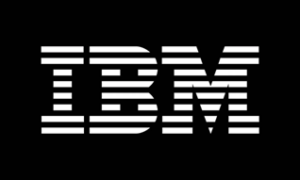Experts warn that climate change is one of the most significant threats of our time. As extreme weather events like major wildfires, epic floods, storms, heat waves, and droughts affect more and more people, pressing issues like water scarcity and deforestation become increasingly urgent. We are witnessing a degradation of natural systems and a drastic decline in biodiversity.
Tech has become a significant part of our lives, but the tech sector is one of the biggest pollutants on the planet. As electronic devices become an increasingly inseparable part of modern existence, so does our need to mitigate the e-waste that comes with them. The communication tech sector now makes up over 2% of global greenhouse emissions — and it’s forecast that it will constitute 15% of global emissions by 2040. And that’s just what’s in the air. On the ground, we’re talking an estimated 57.4 million tons of e-waste in 2021.
Companies are only just now starting to find solutions as the climate crisis becomes increasingly life-threatening. Yes, the challenges are immense and complex — but there is hope, as innovators (and their innovations) are helping make the world healthier and safer. The good news is that tech companies are also beginning to step in and lead the sustainability charge, making concrete efforts to drastically reduce their impact on the climate and protect the environment.
In honor of Earth Day, let’s take a peek at how 10 of today’s biggest tech companies are driving impactful eco-initiatives today and where they’ll be tomorrow, according to Technology Magazine and Sustainability Magazine:

Google’s sustainability aims revolve around three key pillars: accelerating the transition to carbon-free energy, empowering individuals and communities to lessen their climate impact using innovative technology, and creating positive impacts for the people and places across the globe where Google operates.
Google first began purchasing renewable energy in 2010, and in 2017 it became the first major tech company to match 100% of its annual electricity usage with renewable energy purchases. By 2030, Google plans to operate all its data center and office campuses using carbon-free energy sources. It is investing heavily in sustainability research and development to create new technology that can help reduce waste and conserve natural resources, employing machine learning to discover ways to increase efficiencies, like using smart thermostats to cool its data centers.
Google is itself a major innovator in climate tech. Its Maps app is infused with sustainability features, like showing the most fuel-efficient routes, which help drivers make more ecological choices. Google’s parent company, Alphabet, created a $5.75 billion Sustainability Bond — 100% of the proceeds are dedicated to supporting environmentally and socially responsible projects. With these ambitious and innovative initiatives, Google sets an example of how a tech company can use its influence and resources to help address the climate crisis.

Microsoft
Microsoft’s sustainability efforts are on the ramp-up. In 2022, the company contracted to have 1.4 million metric tons of carbon removed from the environment. The tech giant is also strategically working to ensure it can secure renewably sourced energy for its global operations in the future by weaving sustainability into its purchasing strategy today.
That same year, the company launched Microsoft Cloud for Sustainability, which offers a comprehensive set of enterprise-grade sustainability management tools geared to support other companies to lessen their climate impact. What’s more, Microsoft is significantly accelerating the development of new climate technologies through its Climate Innovation Fund with the goals of bolstering climate policy efforts, advocating for skills programs to expand a global green workforce, and developing a more dependable carbon accounting system for global use.
By 2030, Microsoft plans to achieve carbon negativity — in other words, removing more emissions than it has generated since its inception in 1975! With additional plans to achieve zero-waste and water-positive status by 2030, Microsoft is elevating the standard for sustainability strategy in big tech.

Amazon
Another major play, Amazon, is the world’s largest corporate buyer of renewable energy and has set impressive sustainability goals for itself. These include achieving 100% renewable energy usage by 2025 — five years ahead of the company’s original target of 2030 — and plans to reach net-zero carbon emissions by 2040.
In fact, by 2022, 90% of Amazon’s electricity came from renewable sources, and the organization’s strong water reduction efforts resulted in 3.9 billion liters less water used from areas surrounding Amazon’s operations.
Amazon Web Services, Amazon’s cloud computing division, also enables customers to build robust sustainability solutions. From waste reduction and energy conservation to carbon tracking, AWS data services are a powerful tool for clients to input, analyze, and manage complex sustainability initiatives and even track their success — effectively driving strong connections between sustainability and desired business outcomes.

Apple
Sustainability has been a core part of Apple’s business, with strategic initiatives that encompass reducing its carbon footprint, increasing its use of recycled materials, and consuming renewable energy. A testament to this, since 2008, Apple has tweaked its product design, reducing the average energy use of its products by 70%! And in 2021, the company doubled the amount of recycled cobalt, tungsten, and other rare earth elements in its products.
Apple’s latest reports show significant progress toward its carbon reduction goal. Lisa Jackson, Apple’s Vice President of Environment, Policy, and Social Initiatives, said in the company’s 2023 ESG report that Apple had reduced emissions by 45% since its 2015 baseline. In that same period, the tech juggernaut increased its revenue by 65%, ultimately proving that sustainability strategies can (and probably should) align with financial ones. “We demonstrated that the choice between a thriving business and a thriving planet is a false one,” said Jackson.
Today, about 20% of the materials Apple uses in its products are made from recycled content, and by 2034, the company plans to be carbon neutral. It’s clear that, in this case, going green means increasing both eco-friendliness and profits.

Intel
In 2022, Intel made some incredible strides toward its 360 approach to reducing its climate impact across its entire operational footprint. That year, 67% of manufacturing waste was upcycled — showcasing a big win for Intel’s circular economic business approach. The company also increased its renewable energy to 100% within the United States, Europe, Malaysia, and Israel, bringing its global average of renewable energy use to 93%. And, with respect to water conservation, Intel saved about 9.6 billion gallons too.
Looking ahead, Intel also plans to achieve net-zero greenhouse gas emissions across its worldwide operations by the year 2040, with 100% renewable energy use and zero waste to landfills. This ambitious goal certainly puts Intel on par with industry leaders.

IBM
IBM is making moves as part of its sustainability strategy to drive ethical and equitable impact as it continues to support businesses entering the digital landscape. In 2022, it implemented conservation projects that saved 71,000 megawatt-hours of energy and 25,600 metric tons of carbon. The company is investing in research and development to create technology that can help reduce waste and conserve resources, to divert 90% of nonhazardous waste from landfills and incineration by 2025.
By 2030, the company plans to have net-zero greenhouse gas emissions and have optimized operational plans in places that further reduce pollution and minimize climate risk. With these goals in place, IBM is at the forefront of the tech industry’s eco-efforts.

NVIDIA
Tech multinational NVIDIA’s sustainability strategy is centered around its commitment to acquiring or producing renewable energy to offset its global electricity consumption. The company seeks sustainable solutions especially when building new or expanding existing data centers as part of its overall carbon prevention and efficiency process.
On top of this, NVIDIA’s core technology is part of a societal shift towards electric and AI-driven vehicles, helping to drive these sustainable initiatives forward. They believe that autonomy will allow greater efficiency via simplified transportation and that their chips allow the smartest integration into cars and other modes of transport, ultimately making a green impact that’s scalable and future-forward.

Meta
Since 2010, Meta has had net-zero carbon emissions across its global operations, showing a reduction in operational emissions by 94% based on its 2017 baseline. They have even followed this up with 100% renewable energy implementation across all its data centers. In 2021, Meta supported carbon removal projects in Mexico and Kenya, representing more than 200,000 tons of carbon sequestration through forest and soil capture.
By the year 2030, Meta will support efforts to remove carbon equivalent to the amount they cannot reduce. With these initiatives, Meta shows its own involvement in the fight against climate change and its alignment with global efforts to restore the health of the planet.

Dell Technologies
To mitigate the 57.4 million metric tons of e-waste currently being produced yearly, Dell Technologies is taking a quid pro quo type of approach. The company is planning to reuse or recycle an equivalent product for each new product a customer purchases. They have also set a goal of net-zero greenhouse emissions by 2050, while actively investing in research and development to create new technologies to meet these sustainability goals to drastically reduce waste and conserve natural resources. As the world moves towards a more digital and connected future, Dell Technologies is moving along with it, delivering sustainable solutions to meet the needs and expectations of its clients.

HP
Last but not least, HP is making sustainable changes of its own to match the competition. The company has set the target goal of zero waste by 2025 across all operations and is investing in sustainability research and development into new technologies that can help it achieve its aims. By 2025, HP will also use 100% renewable energy to power its global operations — and by 2040, it plans to be carbon neutral. The organization’s commitment to corporate social responsibility across its supply chain and operations is set to drive positive change for the planet, people, and profits alike.
__________________________________
Bottomline
Our society’s push for sustainability has become a centerpiece of American business culture that permeates organizational strategy from operations to product design. Just as companies continue to fall in line with consumer preferences and expectations, their business goals continue to fall in line with their desired economic outcomes. For the first time, the Department of Energy had a CES booth, where Jennifer Granholm, The United States Secretary of Energy, spoke about the Biden administration’s goals of achieving 100% renewable clean electricity for the nation’s grid by 2035 and a net-zero carbon economy by 2050.
As large and small companies seek ways to become more sustainable to stay competitive, they will face challenges — finding a smarter path forward can require a lot of trial and error. If you’re at an eco-conscious crossroads or need help navigating this operational terrain, reach out to us at Creative Circle. We have systems experts and operational gurus who can help you transform your company into an eco-friendly powerhouse that’s prepared for what is to come.



